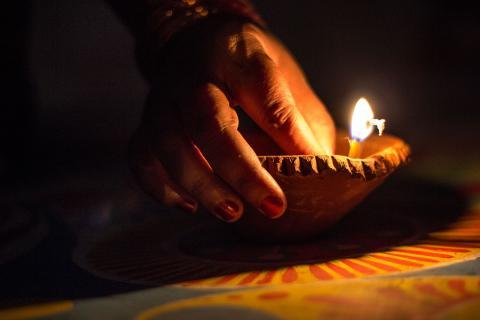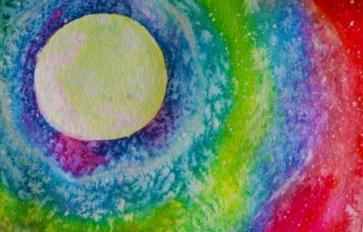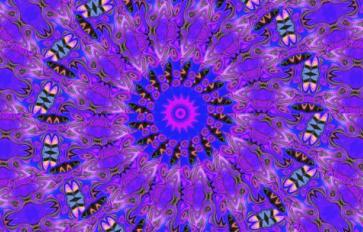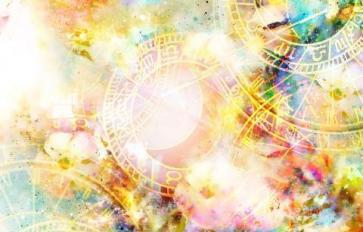
Hinduism: a religion so old, that most modern-day Hindus themselves find it to be mysterious and enervating to study. It boasts of sciences as advanced as the chanting of the Aum or Om said to kill microbes, and yet it’s reduced to a mere symbolism of temples sometimes. Its holy books have long been lost and reduced to folklore and mythology. And one such book is the Ramayana. For Hindus worldwide, the start of the cold season is marked rather auspiciously by numerous festivals and holy days—but two festivals stand out in more ways than one. One is Dussehra, the other Diwali. Both are basically connected to Rama, the seventh avatar of Vishnu, and the protagonist of Ramayana.
The Ramayana Explained: Quickly
The grand kingdom of Ayodhya was ruled wisely by the King Dashratha who had three wives: Kaushalya, Sumitra, and Kaikeyi. He had a total of four sons: Rama, the eldest by Kaushalya; Lakshmana and Shatrughna by Sumitra; and Bharata by Kaikeyi. Since Rama was the eldest, as is the birthright, he was to be named the crown prince. However, Bharata’s mother Kaikeyi was promised that the son born from her womb would become king. She had once saved her husband Dasharatha’s life in battle, upon which he had promised her two boons. Now that Rama was about to be crowned prince, she demanded those two boons from her husband—one, that her son, Bharata, be the crowned prince and two, that Rama was to be sent on a 14-year exile to the forests. This was the Satyuga, where once a promise was made; it simply had to be completed. Thus, Dasharatha had no choice but to give in to the demands of Kaikeyi and so with a heavy heart, Rama was sent to exile.
Sita, Rama’s wife and basically the avatar of Lakshmi, Vishnu’s consort, accompanied her husband by her own choice as did Rama’s younger brother Lakshmana, swearing to protect Rama and Sita with his life. Meanwhile, in Ayodhya, Dashratha passed away in misery and Bharata decided to rule the kingdom but with his brother’s padukas (wooden footwear) on the throne—he was ruling in lieu of his brother but not as the king. Rama, Sita, and Lakshmana meanwhile started to eke out a living in the jungle, until Ravana—a demon-king—came across Sita and was so attracted by her ethereal beauty that he wanted her for himself. He offered her all the riches of the world if she would come with him but Sita, loyal and steadfast to Rama, refused. So Ravana disguised himself and kidnapped Sita. Ramayana then followed the struggle that Rama and Lakshmana faced in order to bring back Sita and the war they ended up waging against Ravana to rescue her shows the eternal struggle between good and evil.
Along the way they are helped by Sugriva, the bear king, and Hanumana, the monkey God (who is rumored to be still alive and is an avatar of Rudra, aka Lord Shiva) as well as one of Ravana’s brothers Vibhishana.
The Deeper Aspects of Ramayana
Ramayana is more than just a story. It is the tale of the unending struggle between good and evil, of the moral, ethical, and social struggles that happen within us, and what it takes to overcome it all. Here are a few lessons to take from it…
- Kill the demons within: From Satayuga to Tretayuga to finally now—the Kaliyuga, the darkest hour of mankind—the goal of every human needs to be the same. Kill the Ravana within us. We all covet, we all lust, we all have greed and hunger—this is the Ravana within us that needs to die.
- Pride will always lead to a fall: Ravana was an incredibly learned man, and he could have done the world a great amount of good. He coveted and felt that he was such a powerful king, Sita should have acquiesced to his demands immediately—being great with a great ego to match cancels out that greatness. Your ego is a Ravana: it needs to be burnt away else you stand in line to be destroyed.
- Devotion can come in any shape, cast, or creed: Hanumana was shown to be a monkey God, and in Rama, he found the true meaning of life. Rama too loved and accepted Hanumana like a brother. In the same way, in one moment in Ramayana, a low-caste woman Shabari offers Rama some berries. Only in her enthusiasm to offer him the sweetest fruit, she tasted them all and put only the choicest, half-eaten fruits in front of him. Rama ate them all—for her tasting the fruits showed her immense love for him.
- Being righteous is what matters: Rama is known as the ideal man, the one with all the moral goodness in the mortal world. And Ramayana teaches us to strive to be like him, to make sure that right is always done, no matter the price. His brother Bharata had a chance to covet his brother’s kingdom but chose to rule in Rama’s stead instead, and when Rama came back, Bharata made sure that Rama was made king as rightful heir to the throne. On the other hand, Rama was a prince brought up in all the comforts of the royal house—but when his father exiled him for 14 years to the wilderness, Rama did not hesitate for a second and did as he was asked to do. Dashratha too bemoaned his son’s fate and died pining for him, but could not refuse what he had promised—words were meant to be kept. In the same context, Ravana’s brother Vibhishana went against his brother and stood with Rama—he gave up his family and was branded a traitor but remained steadfast in his righteousness.
- Dispel the darkness with a welcoming diya inside: When Rama vanquished Ravana and rescued Sita, and when their 14 years of exile was over, they returned to Ayodhya. And the people of Ayodhya, glad to have their king and their queen back, lit all the lamps in the kingdom—it was a light so bright that it dispelled the darkness of evil, gloom, and sadness. It brought joy to Rama, Sita, and Lakshmana and to the people as well. That day, Ayodhya was the sun. So in times of darkness, despair, and evil, remember that we have to light the way with our goodness, our spirituality, and our moral compass, and the darkest of nights will soon break into a glorious dawn.
The Modern Day Symbolism of Dussehra & Diwali
Dussehra is the day that Rama killed Ravana in an epic battle and rescued his wife from the clutches of the demon king. This is the day Hindus celebrate as good triumphing over evil. Symbolically in India, effigies of Ravana along with his demon brothers Kumbhakarna and Ravana’s son Meghnada are burnt amidst celebrations. But the symbolism has to come from the inside of all of us and mean something far more than just surface festivities. We need to gather all that is evil, bad, and diseased inside us and use our goodness, faith, and belief to burn the demon inside. We need to shuck the laziness, discard the greed, overcome the hunger and the lust, discard the anger and the rage and be the best of what we could become. Dussehra is an auspicious day for a positive change, and in the twenty-day countdown to Diwali, it is what could turn lady luck in our favor too.
Diwali is the day Rama, Sita, and Lakshmana finally returned to Ayodhya—their exile was over and truth had prevailed over evil. They were a victorious return and the people of Ayodhya were beside themselves with joy. They were supposedly returning in Ravana’s erstwhile chariot Pushpaka Vimana, that could ascend and descend as per the charioteer’s wish. The people of Ayodhya were concerned as the sun had set: how would their king and Ayodhya’s daughter-in-law land safely? So it is said that they lit every diya of Ayodhya and it shined like the sun—showing Rama the way to home. Till date, Diwali is celebrated with joy—with diyas and candles and fairy lights adorning every house, with people gorging on sweets and exchanging greetings and bursting crackers in utter joy. The deeper meaning of Rama’s return was Sita’s return—the kidnapped wife and daughter-in-law was being brought back with respect and honor. Which is why on Diwali, Lakshmi is worshipped. For not only was Sita the very incarnation of that goddess of wealth, fame, and luck—it is said that every daughter born to every house and every daughter-in-law married to and brought to a new home is a part incarnate of Lakshmi. Respecting women and treating them with honor means wealth, fame, and luck will be yours. Thinking of women as inferior beings, abusing and exploiting them means you insult Lakshmi and it is said that when she turns away from you, ill-luck, disease, and destruction follow…
The lessons we take away from these holy books are simple ones that our own goodness already recognizes. The path to enlightenment, nirvana, rebirth or simply joining the parmatma may take different roads in different religions – but the truth, righteousness, and love are the right directions to follow, mantras and mudras aside. I leave you with a simple invocation of the Lord, and his energy i.e. his consort. May this Diwali and fall be blessed for you! Light the lamp of goodness inside and watch the darkness dispel…
Hare Rama! Hare Rama! Rama Rama! Hare Hare!
Hare Krishna! Hare Krishna! Krishna Krishna! Hare Hare!








